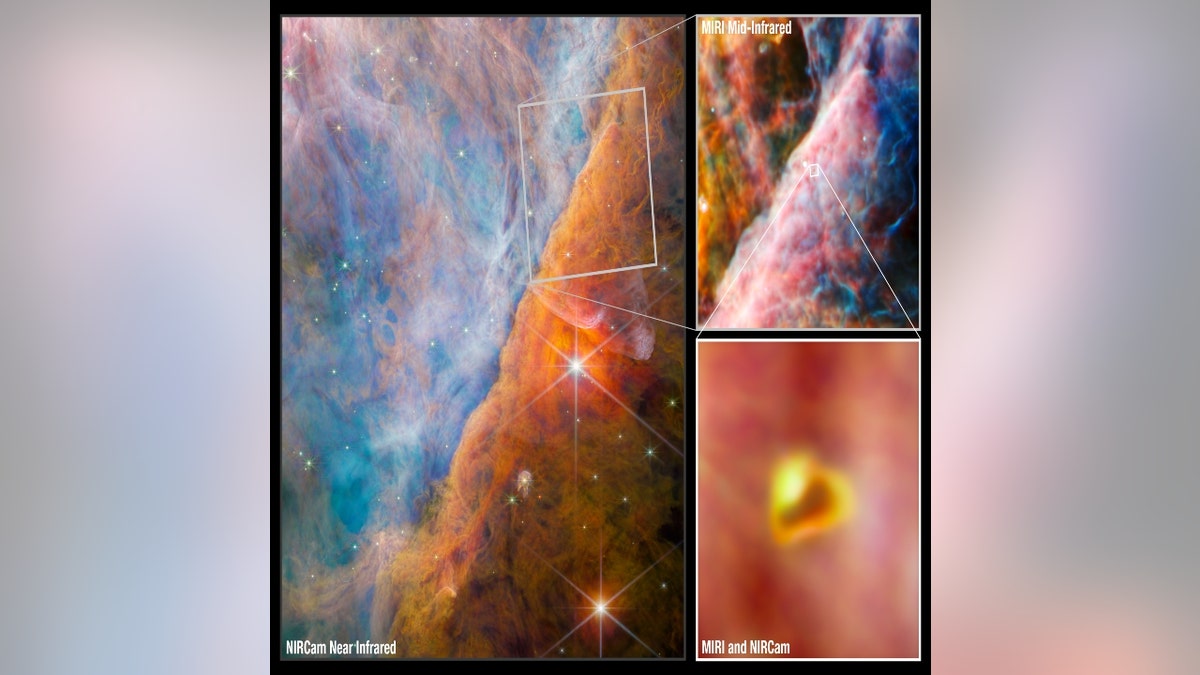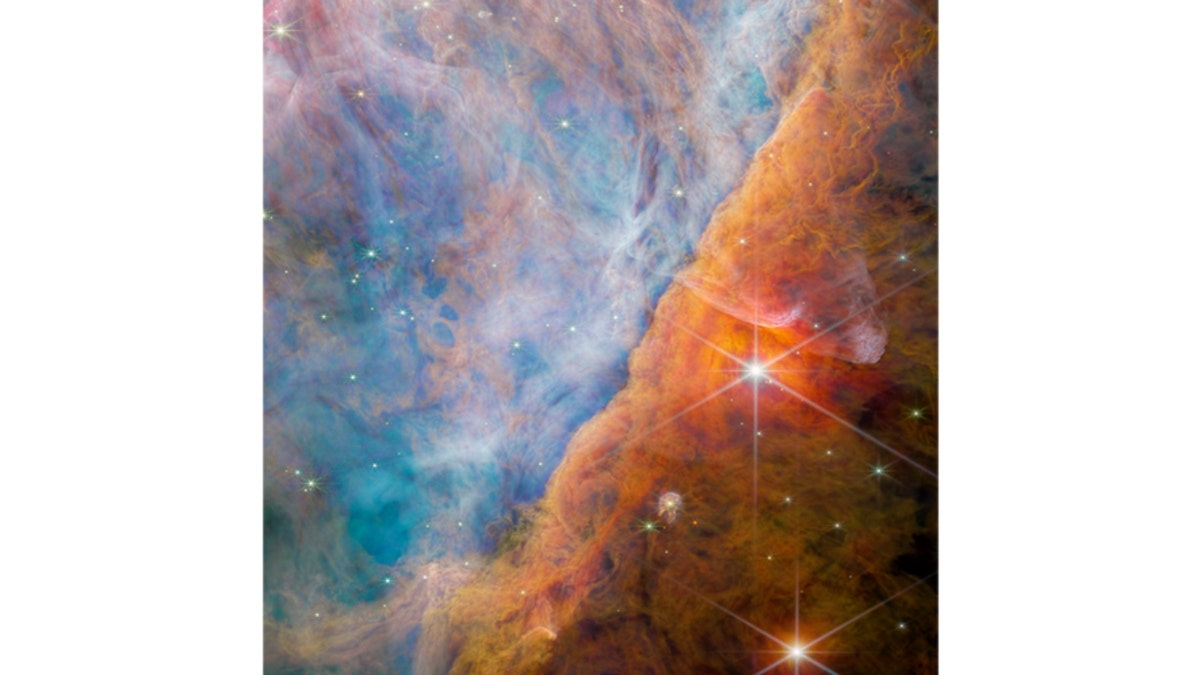Webb Space Telescope allows us to 'look into the past': Theoretical physicist
Theoretical physicist Dr. Michio Kaku explains the significance of new images provided by NASA's Webb Space Telescope on 'Sunday Night in America.'
Scientists have used the James Webb Space Telescope to detect a new carbon compound in space for the first time.
The carbon compound is known as methyl cation, or CH3+.
It is important because it aids the formation of more complex carbon-based molecules.
Carbon compounds form the foundations of all known life.
NASA CAPTURES MARS IN STUNNING ULTRAVIOLET LIGHT

These Webb images show a part of the Orion Nebula known as the Orion Bar. The largest image, on the left, is from Webb’s Near-Infrared Camera (NIRCam) instrument. At upper right, the telescope is focused on a smaller area using Webb’s Mid-Infrared Instrument (MIRI). At the very center of the MIRI area is a young star system with a protoplanetary disk named d203-506. The pullout at the bottom right displays a combined NIRCam and MIRI image of this young system. (Credits: ESA/Webb, NASA, CSA, M. Zamani (ESA/Webb), and the PDRs4All ERS Team)
The findings were published in the journal Nature.
Methyl cation was detected in a young star system known as d203-506, which is located about 1,350 light-years away in the Orion Nebula.
The telescope's detection of key emission lines from the carbon compound determined the discovery.
"This detection not only validates the incredible sensitivity of Webb but also confirms the postulated central importance of CH3+ in interstellar chemistry," Marie-Aline Martin-Drumel of the University of Paris-Saclay in France, a member of the science team, said in a statement.

This image taken by Webb’s Near-Infrared Camera shows a part of the Orion Nebula known as the Orion Bar. It is a region where energetic ultraviolet light from the Trapezium Cluster — located off the upper-left corner — interacts with dense molecular clouds. The energy of the stellar radiation is slowly eroding the Orion Bar, and this has a profound effect on the molecules and chemistry in the protoplanetary disks that have formed around newborn stars here. (Credits: ESA/Webb, NASA, CSA, M. Zamani (ESA/Webb), and the PDRs4All ERS Team)
NASA says that while the star in d203-506 is a small red dwarf, the system is impacted by strong ultraviolet light from nearby stars.
While UV radiation is typically expected to destroy complex organic molecules, the team predicted that radiation from ultraviolet light may provide the necessary source of energy for the carbon compound to form.

This image from Webb’s Mid-Infrared Instrument shows a small region of the Orion Nebula. At the center of this view is a young star system with a protoplanetary disk named d203-506. An international team of astronomers detected a new carbon molecule known as methyl cation for the first time in d203-506. (Credits: ESA/Webb, NASA, CSA, M. Zamani (ESA/Webb), and the PDRs4All ERS Team)
Once formed, it promotes additional chemical reactions to build more complex carbon molecules.
Scientists believe that most planet-forming disks go through a period of intense UV radiation, because stars tend to form in groups that often include UV-producing stars.
CLICK HERE TO GET THE FOX NEWS APP
Molecules seen in the star system are different from typical protoplanetary disks – including no signs of water.
"This clearly shows that ultraviolet radiation can completely change the chemistry of a protoplanetary disk. It might actually play a critical role in the early chemical stages of the origins of life," Olivier Berné of the French National Centre for Scientific Research in Toulouse, lead author of the study, said.





















